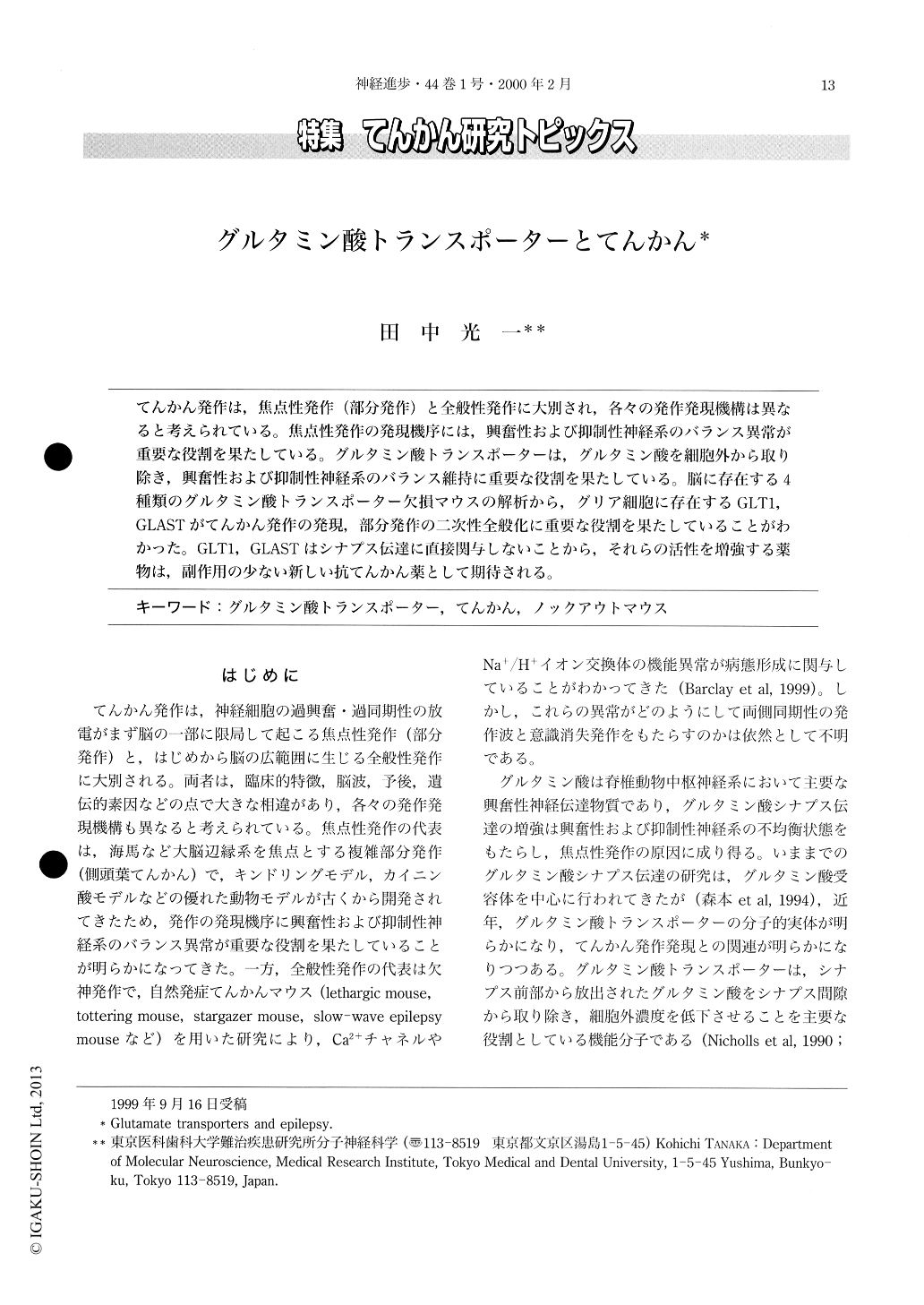Japanese
English
- 有料閲覧
- Abstract 文献概要
- 1ページ目 Look Inside
てんかん発作は,焦点性発作(部分発作)と全般性発作に大別され,各々の発作発現機構は異なると考えられている。焦点性発作の発現機序には,興奮性および抑制性神経系のバランス異常が重要な役割を果たしている。グルタミン酸トランスポーターは,グルタミン酸を細胞外から取り除き,興奮性および抑制性神経系のバランス維持に重要な役割を果たしている。脳に存在する4種類のグルタミン酸トランスポーター欠損マウスの解析から,グリア細胞に存在するGLT1,GLASTがてんかん発作の発現,部分発作の二次性全般化に重要な役割を果たしていることがわかった。GLT1,GLASTはシナプス伝達に直接関与しないことから,それらの活性を増強する薬物は,副作用の少ない新しい抗てんかん薬として期待される。
The amino acids, L-glutamate and GABA serve as major excitatory and inhibitory neurotransmitters, respectively, in the mammalian brain. High-affinity transporters for these amino acids in neurons and glial cells are essential for the removal of these transmitters from the synaptic cleft and for regulating their extracellular concentration. There is compelling evidence that epilepsy is associated with changes in the balance of glutamatergic and GABAergic neurotransmission. More recently, it has been suggested that changes in GABA and glutamate transporters may be important in epileptogenesis and seizure propagation.

Copyright © 2000, Igaku-Shoin Ltd. All rights reserved.


